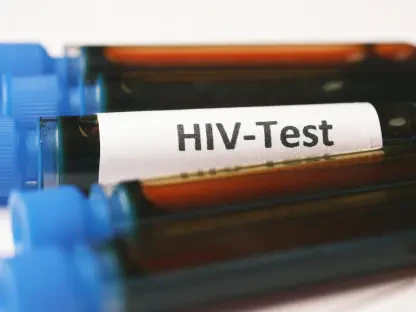The looming threat of Medicaid funding cuts casts a dark cloud over the already precarious rural healthcare systems across America. As legislative discussions progress with proposals aimed at trimming Medicaid expenditures, rural hospitals find themselves grappling with an uncertain future. This market analysis sheds light on the potential ramifications of these cuts, diving deep into the financial dependencies, healthcare service vulnerabilities, and potential societal repercussions, all of which are critical for stakeholders to understand in navigating the turbulent healthcare landscape.
Examining the Financial Stakes: Challenges Loom for Rural Hospitals
Rural healthcare institutions have historically faced financial adversity, exacerbated by structural disadvantages such as workforce shortages and lower patient volumes. Medicaid has been a significant financial pillar, contributing an average of 9% to rural hospital revenues. In states like Louisiana and Kentucky, this figure can soar beyond 15%, underscoring the program’s role in keeping many facilities afloat. Proposed Medicaid reductions are poised to disrupt this delicate balance, pushing financially fragile hospitals to the brink of insolvency. This precarious situation necessitates careful consideration by policymakers to avert a potential healthcare collapse in rural regions.
Obstetrics Under Siege: The Ripple Effect of Medicaid-Cut Scenarios
Healthcare services in rural communities face heightened instability, with obstetric care standing at the forefront of these challenges. Medicaid’s role in covering nearly 50% of rural births illustrates its critical support. However, current reimbursement disparities between Medicaid and private insurers render obstetric services costly for rural hospitals. With impending funding cuts, these essential services are at risk of being curtailed, leading to increased travel times and poorer health outcomes for expectant mothers. This scenario exemplifies the broader vulnerabilities within rural healthcare, necessitating innovative solutions to bridge service gaps.
Dispelling Misconceptions: Regional Variances and Policy Nuances
While states with higher Medicaid reliance brace for significant impacts, even regions with moderate dependency face unique obstacles, including geographic isolation and demographic shifts. The narrative that “cutting waste” would yield substantial savings often neglects tangible effects on community health and service delivery. An informed and nuanced policy approach that considers regional disparities is essential to prevent further deterioration of rural healthcare systems. Understanding these complexities is critical for stakeholders aiming to craft sustainable solutions.
Future Directions: Navigating Challenges with a Strategic Vision
The path forward for rural healthcare hinges on embracing innovation and policy realignment. The integration of telehealth services and the optimization of supply chain practices present promising avenues to alleviate some of the financial burdens on rural hospitals. However, without corresponding adjustments in Medicaid funding, these advancements may fall short of resolving underlying fiscal challenges. Industry experts foresee potential regulatory shifts that could reshape Medicaid dynamics, necessitating a proactive approach. By leveraging a blend of traditional strengths and innovative strategies, rural healthcare can redefine its trajectory amidst these constraints.
Recommendations for Mitigation: Strategic Response to Medicaid Realities
To safeguard the sustainability of rural healthcare in the face of Medicaid cuts, several strategic recommendations are paramount. Hospitals must strive to diversify revenue streams and explore comprehensive service delivery models that build resilience. Collaborations with technology firms could enhance operational efficiencies and broaden service reach, while community partnerships offer avenues for shared advocacy and resource pooling. Engaging in policy discussions is crucial to enable stakeholders to anticipate financial pressures and navigate legislative processes effectively. These strategic actions will be vital in mitigating the impact of Medicaid reductions and preserving essential services for rural communities.
In summary, the analysis underscores the complexity and far-reaching implications of Medicaid cuts on rural healthcare systems. While financial vulnerabilities and service challenges pose immediate threats, the opportunity for transformative solutions exists. A multifaceted approach that encompasses policy advocacy, technology integration, and community engagement is recommended to sustain equitable healthcare access and financial stability. By taking proactive steps, stakeholders can ensure that the health and well-being of rural populations are prioritized, safeguarding the future of these vital healthcare networks.









